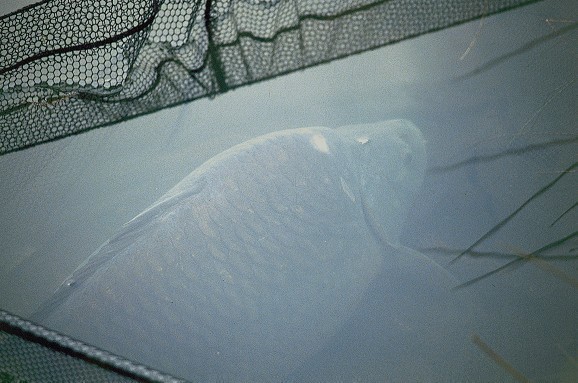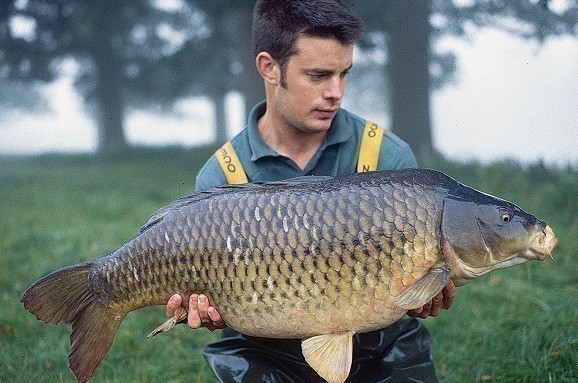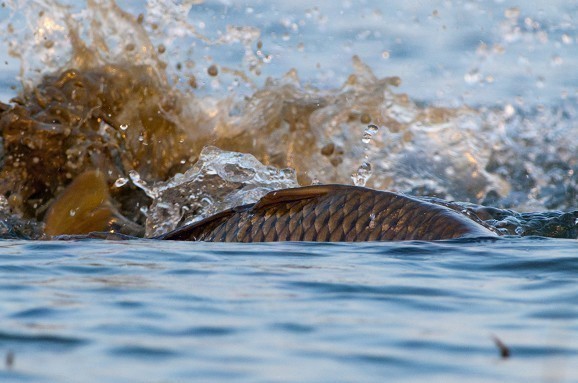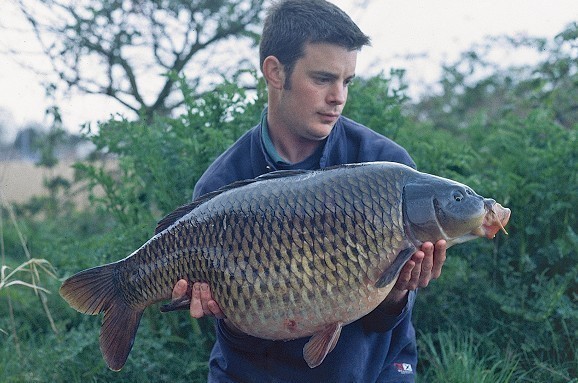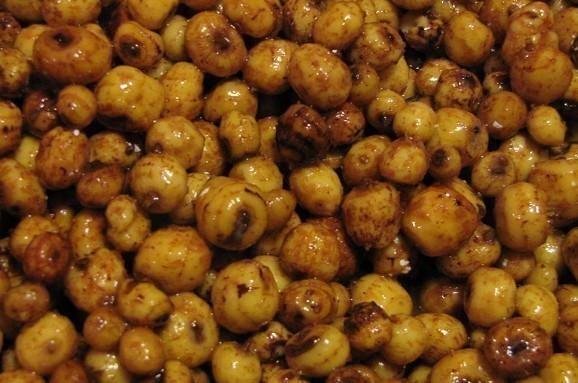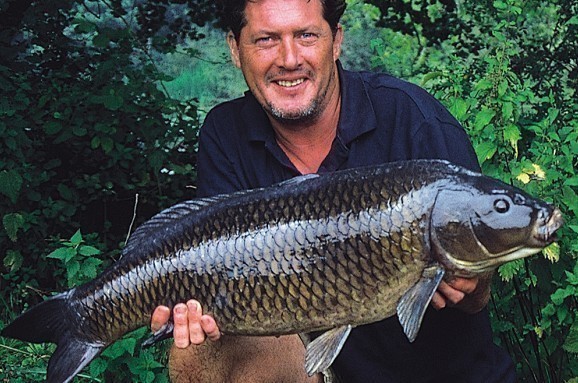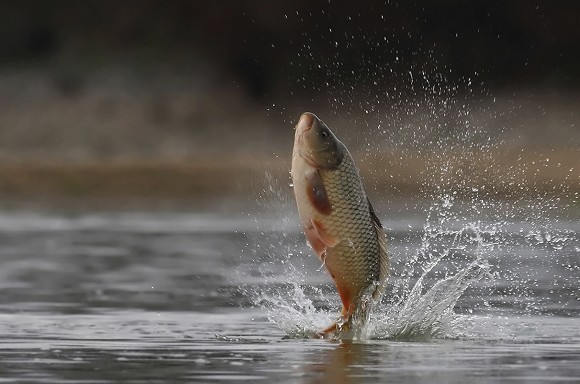
Are common carp better than mirrors?
So why is it that common carp get all this press for their elusiveness, their huge size and their ability to be the least, if at all, caught fish in a lake? Let's find out thanks to Ben Gratwicke...
Carp Rule No.1: why commons?
In the beginning, all carp (Cyprinus Carpio) were commons but as they moved westwards across Europe they become domesticated and gradually the scales were ‘bred’ off them so it would make them easier to prepare and eat. The original commons landed on our shores as what we would know as wildies but their less-scaled brothers and sisters followed at a later date. These ‘new’ less-scaling carp were bred for their fast growth, few scales and for their ability to thrive in a farm situation. And as some of you will know, when they touched down in England, with a little help from a certain Donald Leney, they went on to do great things.
Carp Rule No.2: The elusive big common
One of the major facts why mirrors grow bigger than commons in most lakes is because they have to spend a lot of energy growing scales to plate their body, so while their scale-less brethren are concentrating on getting fat, your average common is covering its body in nice shiny scales.
Mirrors were created to grow bigger, quicker and to get larger than their then lesser brother and sister commons. These days there are so many strains that commons are growing as big as mirrors but the odds of getting a super common are lower as there are less of them in the UK than mirrors.
Another fact is that in MOST lakes, not all, there are far more mirrors than commons and having been heavily involved in selling carp for many years I know that the demand for mirrors far outstrips that of commons, to the point where people ask NOT to have any commons! With this high percentage of mirrors you are bound to get more larger mirrors than commons. I have a lake within three-quarters-of-an-hour from where I live that I fished years ago, I would say 95% of the fish in there are commons and when I fished there two of these commons were in excess of 35-39lb with many 20lb commons and a few mirrors, one of which was nearly 30lb. As I write this, there are now 12 to 15 thirties in there, one of which is a mirror and four other commons around, if not over 40lb up to 45lb! This lake grows fish like nowhere else in the southwest BUT it’s full of commons so they are growing big. If it were full of mirrors they would be big. Would they be bigger, who knows? But guess what else is in there? Yep, you guessed it, a MASSIVE uncaught mirror! And I have heard this over the years from several people. I certainly never saw anything bigger than I caught in the mirror department but who’s to say there isn’t? If it were full of mirrors the uncaught one would be… Well, you get my drift.
Another example is the Frimley complex in Surrey. Loads of big commons so which is the higher percentage of big fish in there?
Carp Rule No.3: firm favourites
I s it possible to catch these rarely or never caught commons then? There is a theory that commons have a liking for corn steep liquor, molasses and varying sweet sticky such things and many years ago Nashbait’s Sting Mix was meant to be good at singling out commons but how true that is I don’t know. But as far as pineapple pop-ups and molasses style baits, I know they have a fair track record at catching commons and this would be a good place to start.
If there are a few or one big common in your lake and it rarely gets caught then it maybe down to its metabolism being slower. It needs to feed less and is better at converting its diet into body growth. There are often numbers of smaller mirrors that nip in there first and maybe it’s simply down to the fact it’s older and wiser?
As for their genetic make-up being different, well, I suppose they still have a little of the old style genetics kicking around in there somewhere and are not as keen to get to the feed first unlike their greedy brothers and sisters.
The big common in the famous undisclosed ‘The Mere’ went uncaught for a long time, only ever getting caught two times. However, when the disaster happened over there two years ago and all the fish died, it was found to be of a huge size but had avoided being hooked and landed. Had it ever been hooked between its last capture and its very sad demise? Why I say this, is that a fish may get hooked but get off and this only has to happen once a year and the fish has got away with it again for another year. That is especially true if the fish likes to feed in an area that is hard to fish or land fish from. There are many mirrors out there which are once-a-year fish and commons are no different in that sense.
The amount of natural food plays a massive role in these low stocked lakes, especially if the fish have been left for years as they get so in tune to their natural larders without the draw of man-made or applied bait. The Mere had many more problems with it well beyond bait and bait presentation and if it could have been fished as a ‘normal’ fishery (I’m glad it never was) would that particular common have stayed uncaught? Who knows?
Carp Rule No.4: hard fighters
“As for commons fighting harder, I think its safe to say that commons and mirrors fight equally as hard depending on the lake and fish in question. If a fish is rarely caught, it will as a rule, fight harder as it is not ‘used’ to the experience and is probably rarely landed as it fights so hard.
“The activity of spawning is carried out with the same vigour across the board and I think that if small commons are involved they are usually the males. The result of this is they are revved up on male hormones and giving their all, whereas your larger, fatter fish are female and if it’s predominately a big mirror water, you are back to the same scenario: more mirrors, less commons so the commons stand out from the crowd if you get my meaning.”
Carp Rule No.5: this missing list
I had an interesting conversation with a certain Mr. Kenny Gates the other day about a very big common in a lake he has fished on-and-off for years. The common in question was, I believe, last caught at upper-thirties several years ago and has managed to stay uncaught to this present day. Its size now? Well, lets just say MASSIVE and how does Kenny know this? Because he has seen it swimming with another once-a-year MASSIVE mirror and it’s as big, if not a little bigger!
Now Kenny put in a concerted effort last year to catch a few of the leviathans within this lake and he managed some pretty impressive fish, a handful of which would make any angler droll. Kenny’s last take came and after what he described as ‘a complete beating up’, the fish managed to get behind a gravel bar and from past experience and observation, Kenny knows that the fish try to rub the hook out of their mouths on the various bars in the lake. After several massive thumps as the fish head-butted the bar, the three-inch hooklink parted and back came a very frayed inch of link and no cigar.
Kenny has caught a lot of fish from this lake including the biggest mirror but he said this was like no other fish he had ever hooked in there. Was it the common? Well, said common is still uncaught and still massive and I should imagine may stay uncaught for a while longer as fish get lost in this lake every year.
Commons are different and do behave, in some lakes where they can be observed, very differently to mirrors but exactly what it is that is different is hard to define.
Carp Rule No.6: can you single them out?
“When a lake has a big common or commons that are amongst many mirrors then a less blatant bait like a tiger may trip up the elusive common. Particles do tend to be a ‘catch-all-fish’ bait whereas a spread of boilies is regarded as a more big fish tactic BUT tigers do have the ability to catch in waters where the fish are not so readily accepting of boilies. If you said a big common lived in a low stocked lake, then this would be a good line of attack, if however there were many fish in the lake, I feel tigers would just catch their fair ‘share’ of fish and have little benefit to single out the commons.”
Carp Rule No.7: their colour
The Snake Pit Common of old was an interesting beast and not only was it very tricky to catch but it looked the part as it was a big framed dark looking fish. The colour can make a fish and if it had been a washed-out pale fish, would it have been such a fish to look at?
The colour of this type of fish is down to the water clarity, as the clearer the water the darker they become as there is no suspended solids in the water to bounce the light off so the fish absorbs less. In contrast, in a murky muddy pool, the fish become pale as the light is reflected off all the particles within the water and the fish absorbs these light rays making them paler. A lot of these mythical large commons are in big, under-stocked clear pits so the clarity gives them this dark look and makes them even more mythical looking!
Carp Rule No.8: what the future holds
I’m not sure what the future will hold for carp and carp fishing in the UK and I know we are losing a lot of our history fish but there are people out there who are doing their best to keep things alive. As for big uncaught commons, well, if there weren’t any we wouldn’t be able to dream and get inspired and as long as these dreams, tales and whispers exist, it will make our lives as anglers more interesting.



